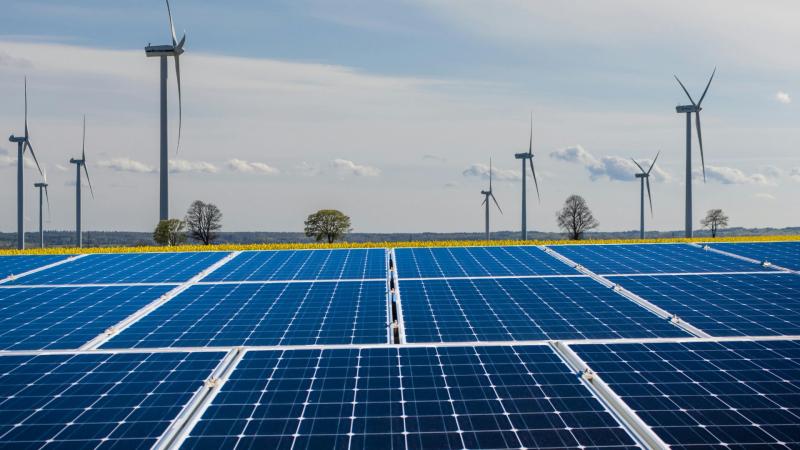
India, a nation experiencing rapid economic growth, is also racing against time to meet its ambitious climate goals. With over 50% non-fossil fuel installed capacity already achieved and a mandate from the Ministry of Power for a 43.33% renewable energy (RE) consumption share, the country is poised for a significant energy transformation. According to the International Renewable Energy Agency (IRENA), the country ranks 4th globally in terms of renewable energy capacity and 3rd in solar energy capacity. However, for a country of over a billion people, transitioning to clean energy without breaking the bank or compromising reliability will be a complex challenge.
To forge ahead, researchers from the Indian Institute of Technology Bombay (IIT Bombay), the National Institute of Advanced Studies (NIAS), and the Indian Institute of Technology Delhi (IIT Delhi) have developed a comprehensive roadmap for India's path to a sustainable power system. Their new computational model provides scenario-based cost estimates for meeting the RE mandate and can guide optimisation of power plant planning and operations.
“Our study brings a novel, high-resolution approach to modelling India’s fast-evolving power system, especially as it faces the practical challenge of rapidly scaling up Renewable Energy,” remarks Nikhil Thejesh Venkataramana, a Prime Minister's Research Fellow at IIT Bombay, who led the study under the guidance of Prof. Venkatasailanathan Ramadesigan (IIT Bombay), Prof. Tejal Kanitkar (NIAS), and Prof. Rangan Banerjee (IIT Delhi).
To successfully model the path to meeting our energy requirements and cross-state power flows, two primary aspects must be considered: the available and evolving infrastructure, and the investment and operating costs of running a system. The researchers developed a computational model, known as the capacity-expansion and economic-dispatch model, which accounted for both these aspects. The capacity-expansion part of their model determines the optimal mix and quantity of new power plants and battery storage required to meet the projected electricity demand at the lowest cost, while satisfying the RE mandate.
Then, the economic-dispatch part of the model, working in incredibly fine detail, schedules every 15 minutes which power plants should run and how much electricity they generate. It can operationalise power plants to meet demand at the lowest possible cost, while respecting their operational limits. The integration of these two parts means that decisions about building new infrastructure are directly informed by how efficiently that infrastructure can be operated in real-time.
“Our model integrates capacity expansion and economic dispatch into a unified optimisation framework, designed to simulate and optimise the power system with high granularity. It is built using a mathematical programming language called GAMS (General Algebraic Modelling System),” explains Nikhil.
The study focused on nine states across India's Western and Southern Regions.
According to Nikhil, these states were selected since “these regions collectively represent over half of the nation’s electricity demand (~56% or ~905 TeraWatthours in FY 2023-24), 42% of its population (592 million in 2023), and 59% of India’s Gross Domestic Product, making our study highly representative of India’s overall energy landscape”.
Their model focuses on the target year 2030, building from a baseline year of 2022–23.
To build their model, the researchers collected granular state- and unit-level power demand and generation data at a 15-minute temporal resolution.
“We secured this detailed data through collaboration with Western Region Load Dispatch Centre (WRLDC) and National Load Dispatch Centre (NLDC) after formalising a Memorandum of Understanding with Grid-India (formerly POSOCO),” says Nikhil.
This level of granularity in the data is crucial because renewable energy sources are notoriously intermittent and dependent on weather conditions. By tracking these rapid changes, the model can accurately represent how solar and wind power fluctuate, how thermal plants operate, and how many flexible resources, such as batteries and transmission lines, are required.
The IIT Bombay-NIAS study revealed that the answer to India's clean energy future lies in coordinated planning across states and a strategic approach to energy storage. The researchers found that by allowing electricity to flow more freely between states and regions, India can significantly reduce overall system costs while integrating a far greater amount of renewable energy. The analysis revealed that transitioning from an isolated, state-wise dispatch to coordinated operation across the Western and Southern regions reduces the total installed capacity requirement from 314 GW to 288 GW. This reduction was based on a 20% Renewable Purchase Obligation (RPO), a government mandate that obligates entities, such as distribution companies and large consumers, to purchase a minimum percentage of their total electricity consumption from renewable sources.
This coordination among states also leads to substantial cost savings, cutting overall system costs by approximately ₹12 lakh crores (around USD 14 billion) by 2030, the target year. The remarkable efficiency comes from the ability to pool diverse electricity demands and renewable resources. For instance, different states have different peak demand times, and by linking them, the overall grid experiences fewer extreme highs and lows. Resource-rich states, like Tamil Nadu for wind or Gujarat for solar, can generate excess clean energy and send it to states that need it, making the best use of available renewables and reducing the need for each state to build costly backup power plants.
“The scale of benefits from regional pooling was surprising. Inter- and intra-regional coordination led to 10–15% system cost savings and a reduction of 20–30 GW in installed capacity. These outcomes underscore the transformative impact of cooperative planning and transmission-enabled flexibility,” remarks Nikhil.
The study also highlights a crucial balancing act required to scale renewable energy: the trade-off between coal-based generation and battery storage. If new coal and hydropower capacity are limited to only those projects already under construction, then integrating a high percentage of renewables would require a massive amount of battery storage for the renewable energy generated. The model predicts that, for around 29–41% RE integration, battery storage would need to be scaled by up to 125 GW in the Western Region and 70 GW in the Southern Region.
While technically possible, such a rapid scale-up of batteries by 2030 might not be the most practical or affordable solution for India, given current costs.
According to Nikhil, "the real question may not be how to scale battery deployment rapidly before 2030, but how to sequence a gradual phase-down of coal alongside a paced and affordable increase in battery storage capacity over the medium-to-long term."
The researchers propose a realistic pathway that involves a strategic, gradual phase-down of older, less efficient coal plants, incremental growth of battery storage in strategic locations, and continued efforts to reduce battery costs through domestic manufacturing and global advancements.
By focusing on India's updated renewable energy consumption mandate and explicitly modelling inter-regional transmission, this study provides policymakers with more practical and immediate insights. The model also highlights the current economic limitations of the nation, suggesting the need for substantial cost reductions and policy support in RE storage expansion. Nevertheless, by systematically modelling the trade-offs between different energy sources and the benefits of regional cooperation, the study provides a way for India to meet its ambitious renewable energy targets and ensure an energy secure future.
“Our detailed and policy-relevant approach provides a powerful tool for planning India’s sustainable energy future, offering insights into how coordinated capacity expansion, targeted storage deployment, and enhanced transmission infrastructure can collectively foster a cost-effective, reliable, and environmentally sound power system”, concludes Nikhil.






